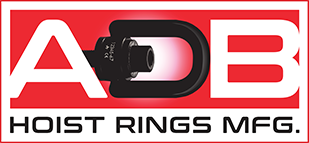Don’t Forget Your Lift Points : HOIST RINGS In Design
Demanding deadlines leave a natural opening for omissions or errors. This is true for even the most thought-out design plans. After many hours of excruciating drawings and calculations, engineering designs come are assigned to the job shop. The engineering department feels the accomplishment until one question arises from the shop floor, “how will you lift your design?” This question has caused the blood to quickly exit many engineers’ faces. How does one avoid these feelings of loss? Simple: don’t exclude the design of the lifting points and the proposed lift plan.
In most designs requiring lifting or rotation applications, hoist rings, which are engineered lifting points, are readily available. At least they are for most applications with working load limits ranging from 250 lbs. to 500,000 lbs. Hoist rings are engineered so that they swivel 360 degrees and pivot 180 degrees. Hoist rings are a natural choice for designs that require lifting points because hoist rings are designed to be threaded into a tapped hole or used in a thru-hole application with a nut and washer. Also, hoist rings are available to meet all standards of ASTM B30.26, which includes requirements such as a 5:1 design factor. The past times of “homemade” lift points are now over with such clear standards relating to safety in the workplace and devices related to overhead lifting.
ADB® is a manufacturer of hoist rings and has an engineering staff that specializes in customized engineered lifting point designs.
